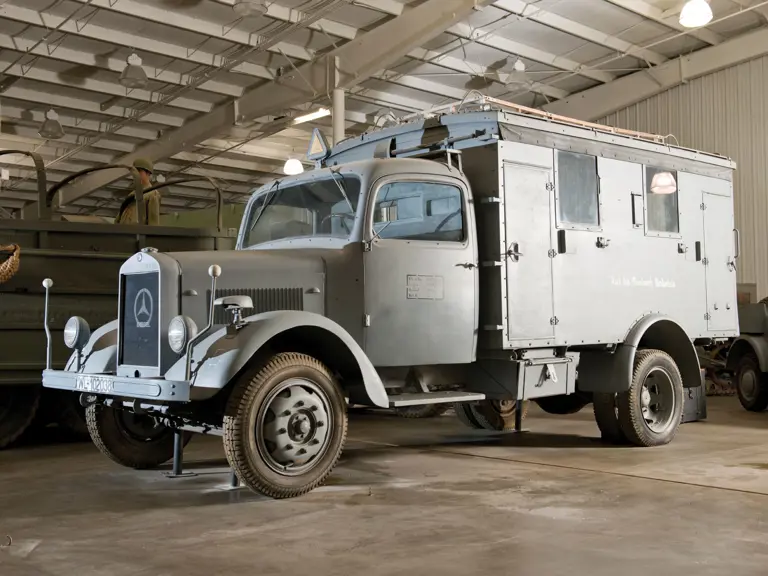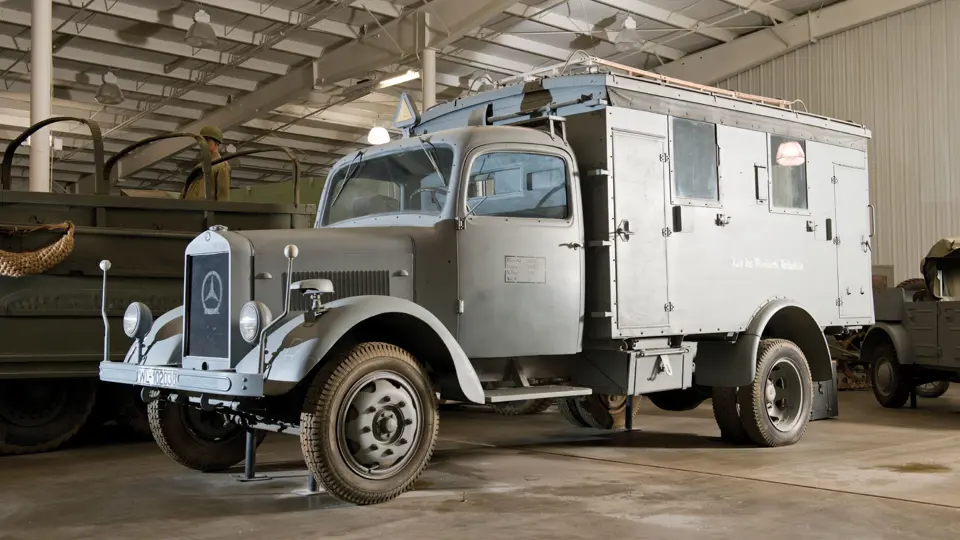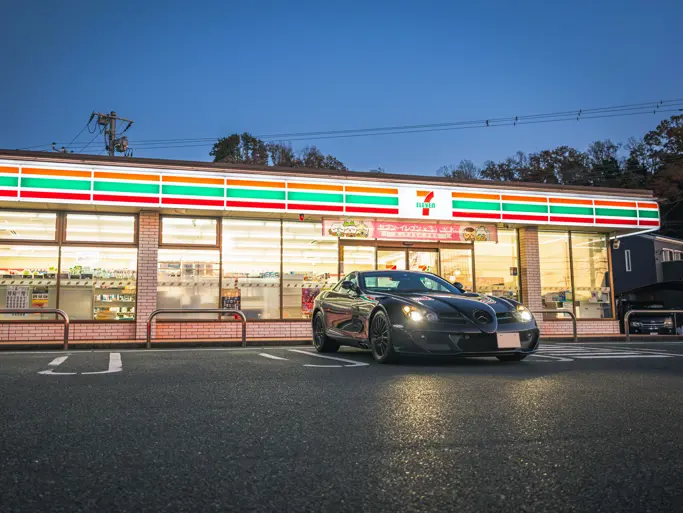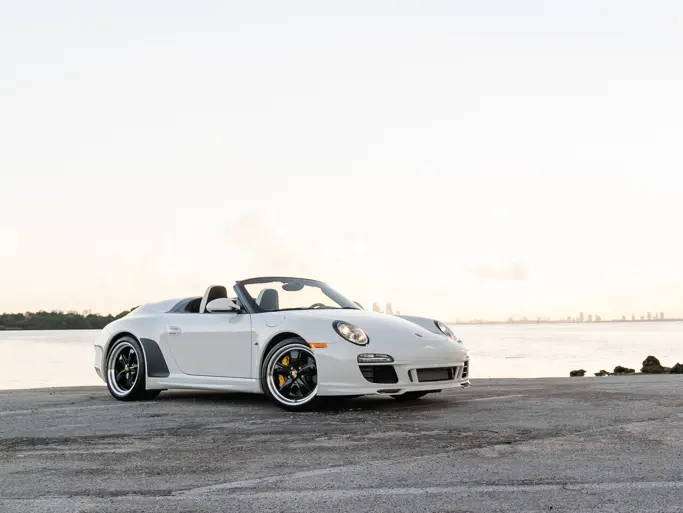Please Note: Information regarding these museum display vehicles was provided by the National Military History Center and has not been independently verified by Auctions America by RM ("AA"). As such, AA does not verify, warrant or guarantee any of this information. Prior inspection and research by the buyer is highly encouraged and recommended.
ATTENTION: Buyers are responsible for securing transportation and moving/loading of lots. Lot may be left on display indefinitely in the museum free of charge with a signed loan agreement form. Lots are sold as is, where is.
Please note this is being sold on "Bill of Sale" only.
Manufacturer: Mercedes-Benz AG, Stuttgart-Unterturkheim
Production Year: 1942
Engine: Daimler-Benz OM65/4, 4.8-liter, 75-hp, four-cylinder, liquid-cooled, diesel
Transmission: 5F1R
Brakes: Hydraulic
Length: 22-feet, 6-inches
Width: 7-feet, 6-inches
Height: 9-feet, 7-inches (to top of box van)
Weight: Approximately 6-3/4-tons (loaded)
Armor: None
Armament: None
Maximum speed: Approximately 50-mph
Wheelbase: 170-inches
Markings: German 2nd Fallschirmjaeger (paratrooper) Division, Ramcke Brigade
The Mercedes-Benz L3000S, 4x2, 3-ton represents one of several different manufacturers’ standardized military truck models that were developed from guidelines established by the Schell-Program. In 1938, General Adolf von Schell, Director of Motorization for the Wehrmacht (German military), proposed to cut back procurement of vehicles of all types to just a few standard chassis (from 113 to 30).Truck models were reduced to classes of 1, 1-1/2, 3, 4-1/2 and 6-1/2-tons, most with a basic 4x2 (S-Type) and a 4x4 (A-Type) version. The Mercedes-Benz L3000S began production in 1938. An A-type version (4x4) was also produced beginning in 1940. The Mercedes-Benz L3000s were not as popular with the German troops as the Opel Blitz (Lightning) 3-ton series. The reliability and cross-country ability of the L3000 was inferior to the Opels. The versatile box-van body, as displayed, was used in numerous roles including workshop, laundry, laboratory, command caravan, radio van, cipher office, ambulance or dozens of other uses. The van body was constructed of wood and pressed cardboard as an economy measure. 7,400 of the 16,000 L3000s built were of the box-van body type.



 | Auburn, Indiana
| Auburn, Indiana


